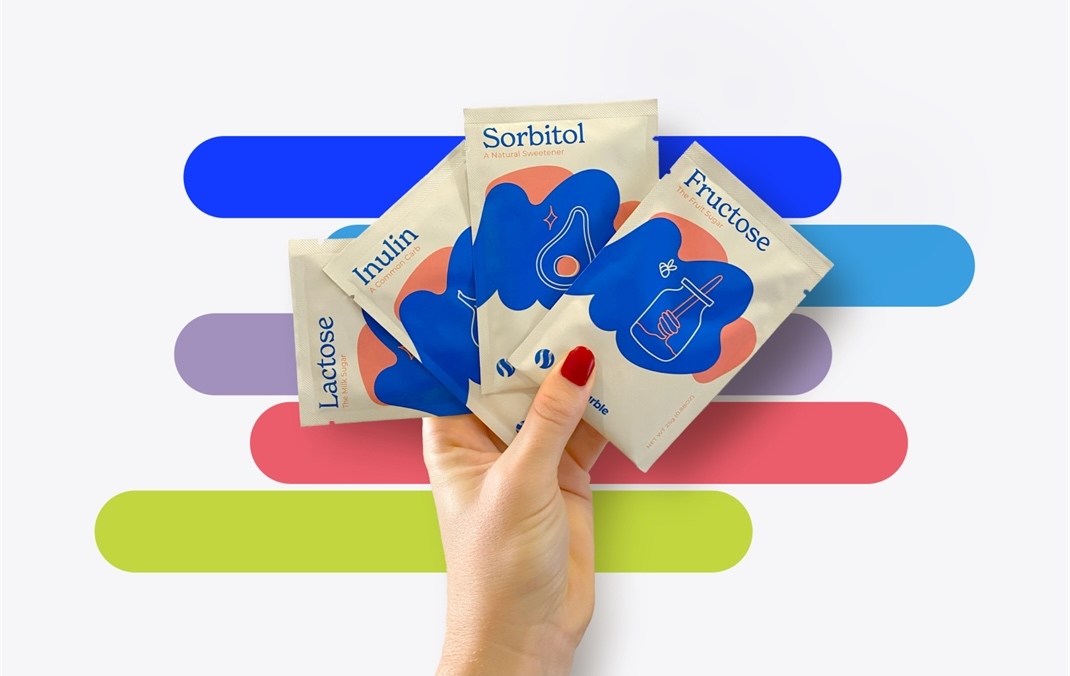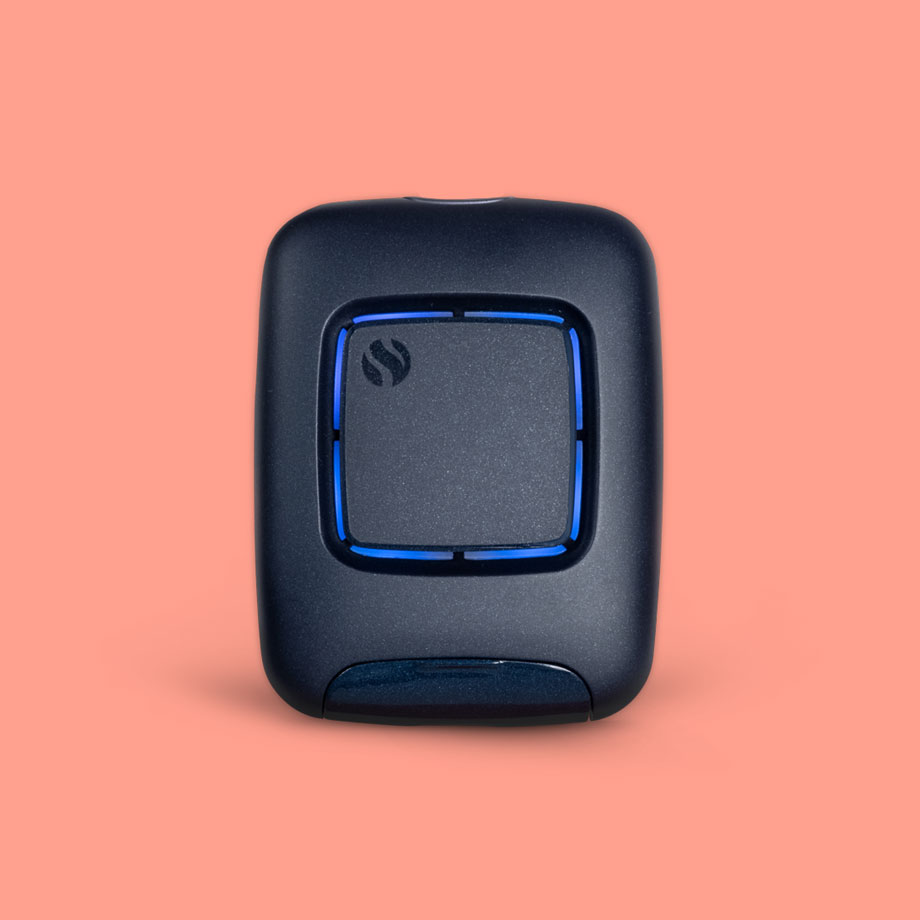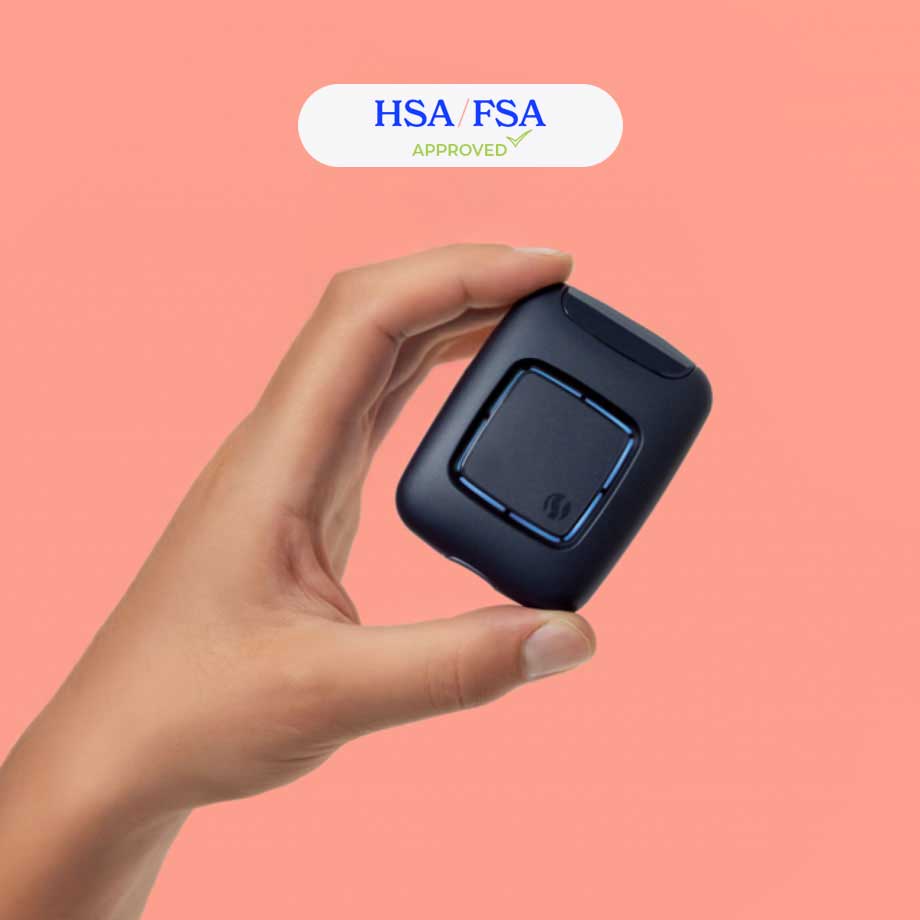What’s included
-
FoodMarble AIRE 2
-
FoodMarble App
-
Carry Case
Log your meals to understand how different foods impact your digestion and trigger symptoms.
Take a breath test with AIRE2 to measure your fermentation levels and track your digestion.

Get instant results and personalized dietary recommendations tailored to your digestion. The perfect companion for SIBO, IBS or food intolerances.
Specifications
-
 Protective carry case included
Protective carry case included
-
 Measures methane and hydrogen
Measures methane and hydrogen
-
 FoodMarble app included
FoodMarble app included
-
 1 year warranty included
1 year warranty included
-
 Charges via USB
Charges via USB


Combine your portable digestive breath tester AIRE 2 with our Food Intolerance testing kit! Test your tolerance to lactose, fructose, inulin, and sorbitol.
Meal Time
When you eat something, it travels through your stomach and into your small intestine for absorption. Anything that isn’t digested continues to your large intestine where fermentation starts to take place.
Fermentation
During fermentation the gases methane and hydrogen are produced. Many of us are hydrogen producers but two thirds of us also produce methane. When these gases build up rapidly they can cause IBS-like symptoms. These gases make their way into the bloodstream and move to the lungs.
Breath Test
Once in the lungs, methane and hydrogen are exhaled on your breath. By measuring the levels of both these gases on your breath with AIRE 2 you get greater accuracy and you get real-time feedback on whether that food is right for your body.
Meal Time
When you eat something, it travels through your stomach and into your small intestine for absorption. Anything that isn’t digested continues to your large intestine where fermentation starts to take place.
Fermentation
During fermentation the gases methane and hydrogen are produced. Many of us are hydrogen producers but two thirds of us also produce methane. When these gases build up rapidly they can cause IBS-like symptoms. These gases make their way into the bloodstream and move to the lungs.
Breath Test
Once in the lungs, methane and hydrogen are exhaled on your breath. By measuring the levels of both these gases on your breath with AIRE 2 you get greater accuracy and you get real-time feedback on whether that food is right for your body.
Can FoodMarble's products help with gluten intolerance?
Coeliac disease is an auto-immune condition, which isn’t very common. It affects 1% of the population or so. AIRE measures gut fermentation levels, which is unrelated to Coeliac disease and gluten intolerance.
If you think that you may have an intolerance or sensitivity to gluten, it would be best to get this tested with your physician. Gluten intolerance is an immune response to gluten proteins. Our products test for different biomarkers and wouldn’t be the ideal tool for testing gluten intolerance.
Is this helpful for lactose/dairy intolerance?
Yes. If you purchase the food intolerance testing kit, you can test your reaction to four common FODMAPs including lactose, fructose, sorbitol and inulin. If you suspect you may have lactose intolerance, you can select this as your first test.
Can this help with IBS?
Visceral hypersensitivity (sensitivity to distension of the GI tract) and altered motility (constipation or diarrhea) are characteristics of IBS. About 40% of those with IBS tend to have more diarrhea. About one third of those with IBS are generally more constipated. The remainder switch between constipation and diarrhea. Those with IBS-C tend to have more methane producing microbes than those with IBS-D. Measuring both gases can help you gain clarity around your symptoms, in particular constipation.
Can a device be shared by more than one person?
To achieve success with our products, we recommend one device per user.
Is it safe for use by children or babies?
Our devices can be used by children under the guidance of an adult. Use for children is exactly the same as it is for adults.
The quantities of the FODMAP substrates are also safe for children.
AIRE is not suitable for use by babies / toddlers, because of the breathing technique required to perform a breath test.
Can my results be shared with my doctor?
Yes, it’s possible for us to share your results securely with your doctor, as long as we get your consent. Assuming your doctor is comfortable to proceed, just send an email to clinical@foodmarble.com with contact details for your doctor and we’ll take it from there.
Which countries do you ship to?
A Austria, Australia
B Belgium, Bulgaria
C Canada, Cyprus, Croatia, Czech Republic
D Denmark
E Estonia
F Finland, France
G Germany, Greece
H Hungary
I Ireland, Italy
L Latvia Lithuania, Luxembourg
M Malta
N Netherlands, New Zealand
P Poland, Portugal
R Romania
S Slovakia, Slovenia, Spain, Sweden, Switzerland
U United Kingdom, United States
Can I test for SIBO using AIRE 2?
We have microbes living in every part of our body. This is totally normal and healthy. As we move through the digestive tract, the number of microbes at each site increases. We have the most microbes in our large intestine. However, sometimes excess microbes can end up in our small intestine. When this happens, a condition called small intestinal bacterial overgrowth (SIBO) can occur. Those with SIBO often have symptoms of abdominal pain, bloating, nausea, belching, diarrhea and constipation. Some people with SIBO may produce more hydrogen, while others may produce more methane. It is important to speak with your doctor if you suspect you have SIBO. If you’ve received a diagnosis of SIBO from a doctor, this device could be helpful for tracking the levels of fermentation in your small intestine.
Can I upgrade my AIRE 1 for an AIRE 2?
We cannot offer device upgrades due to hygiene reasons, however, existing users can avail of the excellent pre-sale discounts if they wish to purchase AIRE 2. Any queries please email hello@foodmarble.com
I suffer from constipation, will AIRE 2 help me to figure out if this is caused by my methane gas levels?
Many of us are constipated regularly. Methane has been shown to slow down the passage of food in the gut and is commonly linked to constipation. Measuring methane can help you understand whether methane is factor in your constipation. Understanding the cause of your constipation may help you treat it more effectively.
Try not to take more than 10 breath tests in 24 hours, too many breath tests may harm the sensors in your device.
Keep AIRE 2 away from all smoke like from cigarettes and cooking. Don’t smoke cigarettes or e-cigarettes shortly before using the device.
Keep the body of AIRE 2 dry, the mouthpiece is detachable and can be washed with soap and water.
Keep the device away from products that contain silicone such as lubricants, hair, beauty, and sun-care products. Silicone often appears as ‘dimethicone’ or other ingredients ending in ’cone’.
To clean the carry case use only cold water to wipe clean and do not use any detergent. Air dry only.
What people are saying

$249

